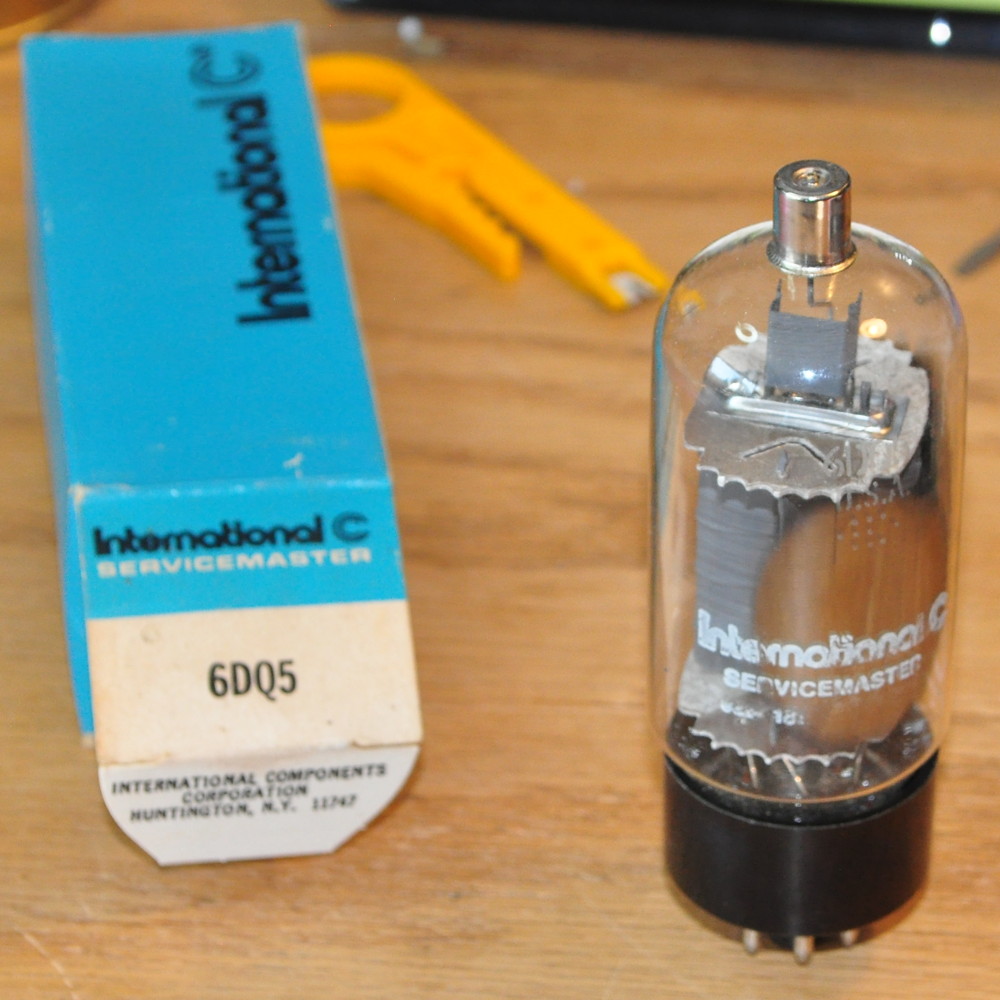This last week I was thumbing through my very dogeared copy the RCA RC-30 Receiving Tube Manual. I was not looking for anything in particular but just browsing and a data sheet for a particular tube caught my eye; the 6DQ5 Beam Power Tube. The only description was “Glass octal type used as horizontal-deflection amplifier in color and black-and-white television receivers”. As I began looking through the specifications I began to wonder how I had missed this tube up to now.
The critical specifications for this tube set it apart from most of the other deflection amplifiers. These ratings include a 24W continuous plate dissipation rating, a 3.2W screen dissipation rating, and some relatively high voltage and current maximum ratings. Clearly this was a tube made for driving the deflection coils of the large 23 to 25 inch high deflection angle CRTs. These ratings also mean that it may really shine as the output stage in a UL topology amplifier.
A little investigation revealed that these tubes are readily available and fairly inexpensive as well. Obviously I ordered up a few for experimentation. They arrived yesterday.
These are a nice sized octal tube with a top cap for the plate connection. They should look handsome on top of an amplifier.
My plan is to do some experimenting with these in an SE-UL topology. I don’t believe that the 3.2W screen dissipation limit should be an issue as the screen dissipation is usually very low in the UL configurations. As a horizontal deflection amplifier it should be inherently low distortion. I am hoping for about 5W peak output with good sound. There is one thing that will require some care in the design phase. This tube has a hefty grid to cathode capacitance of 23pf. I’ll have to watch the total Miller capacitance and the design of the grid circuit to ensure that I preserve the top end frequency response.
Everything considered, this should be an interesting diversion.
And for those wondering about other projects, don’t worry, the 6AS7 SET is still chugging along whenever I get some time. As are the 6L6 SE-UL and the integrated preamp designs. I’ll probably not get back to those in earnest until September as I’m taking advantage of our nice weather to work on some outside projects. As is normal with me, I seem to always have more projects that I have time to work on them all.


Matt, from the data sheets, have you seen a set of curves when used as a triode? I consulted the search engine and diyaudio with little information turning up. A radio amateur penned an article about a breadboard test circuit included on diyaudio at https://www.diyaudio.com/forums/attachments/tubes-valves/203284d1293819112-6dq5-specs-audio-6dq5-jpg that does reference another publication. Not in triode operation though. Thread at https://www.diyaudio.com/forums/tubes-valves/154529-6dq5-specs-audio-2.html
These tubes do sound interesting Matt. 28 watt Anode dissipation makes for adequate power. I guess I could use one heater transformer to supply them and another for the b+ and rectifier tube. Finding SE UL output transformers at a reasonable price in the UK may be a challenge though.
Don’t worry about all your other projects, get designing young man!
They say you’re never busier than when you’re retired.
Truer words we never uttered!
Should be another interesting project. It will be interesting to see which driver tubes will match this output tube.
Have you given more thought to the cathode bias value for the 6as7? I am going to hopefully find a nice piece of recycled timber for the base at a dealer not far from me tomorrow. Will try and make a start.
With 2.5 Amp heater current, are you thinking monoblock construction?
I haven’t gotten that far yet. First I need to see how they sound at some different bias points.
As for the heater current. Remember that the 6336 tube takes 5A to drive the filaments so this is not really any different.
I have 27 6DQ5s and plan on using them soon.
From what I understand, many horizontal output tubes are either siblings or cousins of the 6L6.
Example is the 6BG6 – it is basically a repackaged 6L6. Actually the 6BG6 is a commercial version of the 807, which is a 6L6 repackaged for RF power amplifier and AM modulator use. I think you will be pleasantly surprised by horizontal output tubes.